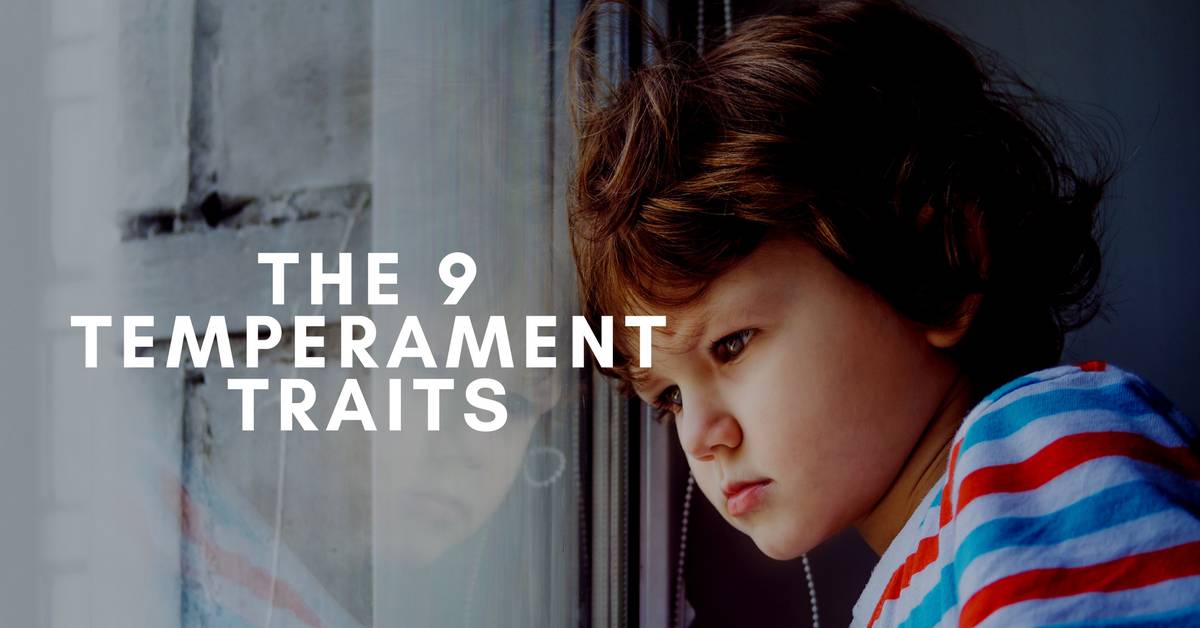Classic child development research conducted by Doctors Chess and Thomas has identified 9 temperamental traits:

- Activity Level: This is the child’s “idle speed or how active the child is generally. Does the infant always wiggle, more squirm? Is the infant difficult to diaper because of this? Is the infant content to sit and quietly watch? Does the child have difficulty sitting still? Is the child always on the go? Or, does the child prefer sedentary quiet activities? Highly active children may channel such extra energy into success in sports; may perform well in high-energy careers and may be able to keep up with many different responsibilities.
- Distractibility: The degree of concentration and paying attention displayed when a child is not particularly interested in an activity. This trait refers to the ease with which external stimuli interfere with ongoing behavior. Is the infant easily distracted by sounds or sights while drinking a bottle? Is the infant easily soothed when upset by being offered alternate activity? Does the child become sidetracked easily when attempting to follow routine or working on some activity? High distractibility is seen as positive when it is easy to divert a child from an undesirable behavior but seen as negative when it prevents the child from finishing school work.
- Intensity: The energy level of a response whether positive or negative. Does the infant react strongly and loudly to everything, even relatively minor events? Does the child show pleasure or upset strongly and dramatically? Or does the child just get quiet when upset? Intense children are more likely to have their needs met and may have depth and delight of emotion rarely experienced by others. These children may be gifted in dramatic arts. Intense children tend to be exhausting to live with.
- Regularity: The trait refers to the predictability of biological functions like appetite and sleep. Does the child get hungry or tired at predictable times? Or, is the child unpredictable in terms of hunger and tiredness? As grown-ups irregular individuals may do better than others with traveling as well as be likely to adapt to careers with unusual working hours.
- Sensory Threshold: Related to how sensitive this child is to physical stimuli. It is the amount of stimulation (sounds, tastes, touch, temperature changes) needed to produce a response in the child. Does the child react positively or negatively to particular sounds? Does the child startle easily to sounds? Is the child a picky eater or will he eat almost anything? Does the child respond positively or negatively to the feel of clothing? Highly sensitive individuals are more likely to be artistic and creative.
- Approach/Withdrawal: Refers to the child’s characteristic response to a new situation or strangers. Does the child eagerly approach new situations or people? Or does the child seem hesitant and resistant when faced with new situations, people or things? Slow-to-warm up children tend to think before they act. They are less likely to act impulsively during adolescence.
- Adaptability: Related to how easily the child adapts to transitions and changes, like switching to a new activity. Does the child have difficulty with changes in routines, or with transitions from one activity to another? Does the child take a long time to become comfortable to new situations? A slow-to-adapt child is less likely to rush into dangerous situations, and may be less influenced by peer pressure.
- Persistence: This is the length of time a child continues in activities in the face of obstacles. Does the child continue to work on a puzzle when he has difficulty with it or does he just move on to another activity? Is the child able to wait to have his needs met? Does the child react strongly when interrupted in an activity? When a child persists in an activity he is asked to stop, he is labeled as stubborn. When a child stays with a tough puzzle he is seen a being patient. The highly persistent child is more likely to succeed in reaching goals. A child with low persistence may develop strong social skills because he realizes other people can help.
- Mood: This is the tendency to react to the world primarily in a positive or negative way. Does the child see the glass as half full? Does he focus on the positive aspects of life? Is the child generally in a happy mood? Or, does the child see the gall as half empty and tend to focus on the negative aspects of life? Is the child generally serious? Serious children tend to be analytical and evaluate situations carefully.


